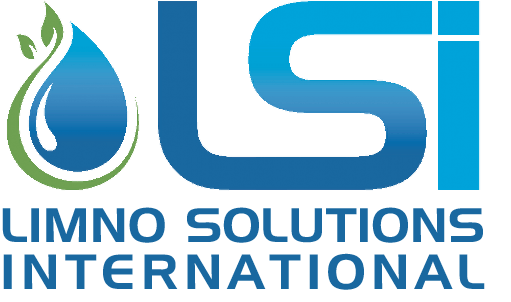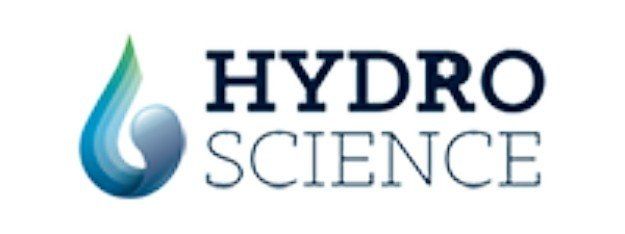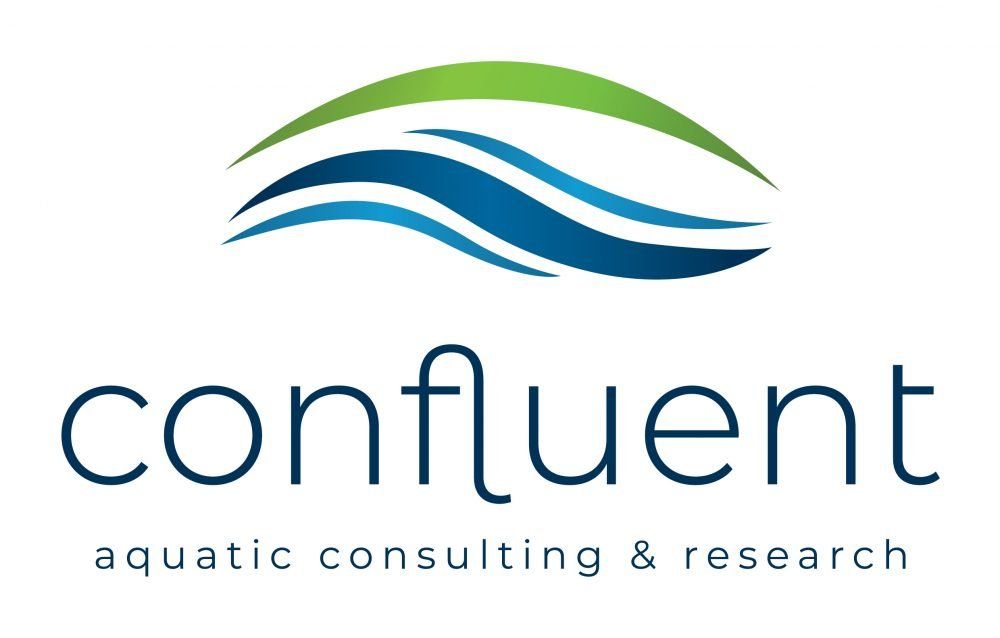Research and Development
LSI is driven by innovation and continually searching for new and ecologically sustainable solutions that are based on solid science. Over the years, we have participated in many R&D projects which are aimed at improving existing methods or developing new tools to restore impaired aquatic systems.
Our Team is active in various scientific forums across the globe, including the Working Group for Lake Restoration within the Society for International Limnology (SIL). We regularly review scientific publications in the fields of aquatic ecology and restoration and participate frequently in international conferences. Many of our findings are published in the peer-reviewed literature.
Below are short descriptions of some of our key R&D projects
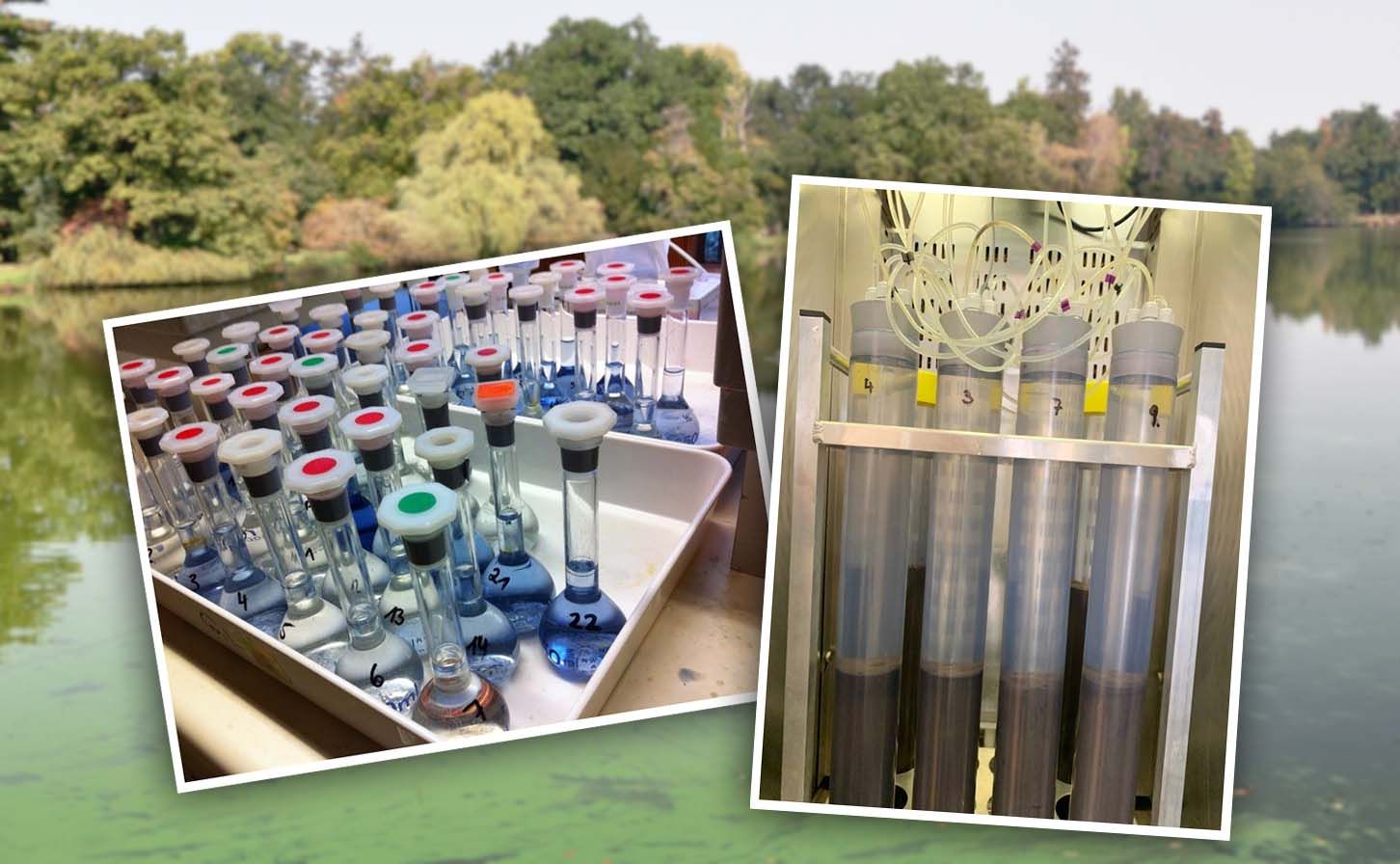
LSI are working with Wageningen University in the Netherlands and the University of Southern Denmark in a project aimed at evaluating new P binders.
There has been a lot of activity in this space recently and a range of new products are starting to appear on the market.
As these products emerge, it’s important that they undergo rigorous testing so that they can be evaluated both in terms of effectiveness and safety. Together with researchers from the two universities, LSI will be testing a total of eight new products from three different companies in coming months.
Once the study is complete, the results will be published with the aim of helping lake managers to make informed decisions as they consider restoration options.
Download:
Abstract_NALMS_Conference_Finsterle_241023

Around 150 P binders are cited in the peer-review literature, however only a few of these are sold commercially on a large scale.
This project used the available literature to assess and compare the efficiency of commercially available P binders. In addition, tests were conducted on several of the materials with the aim of assessing P binding capacities under varying conditions (e.g. anoxia, high pH, salinity) as well as P desorption properties under specific conditions.
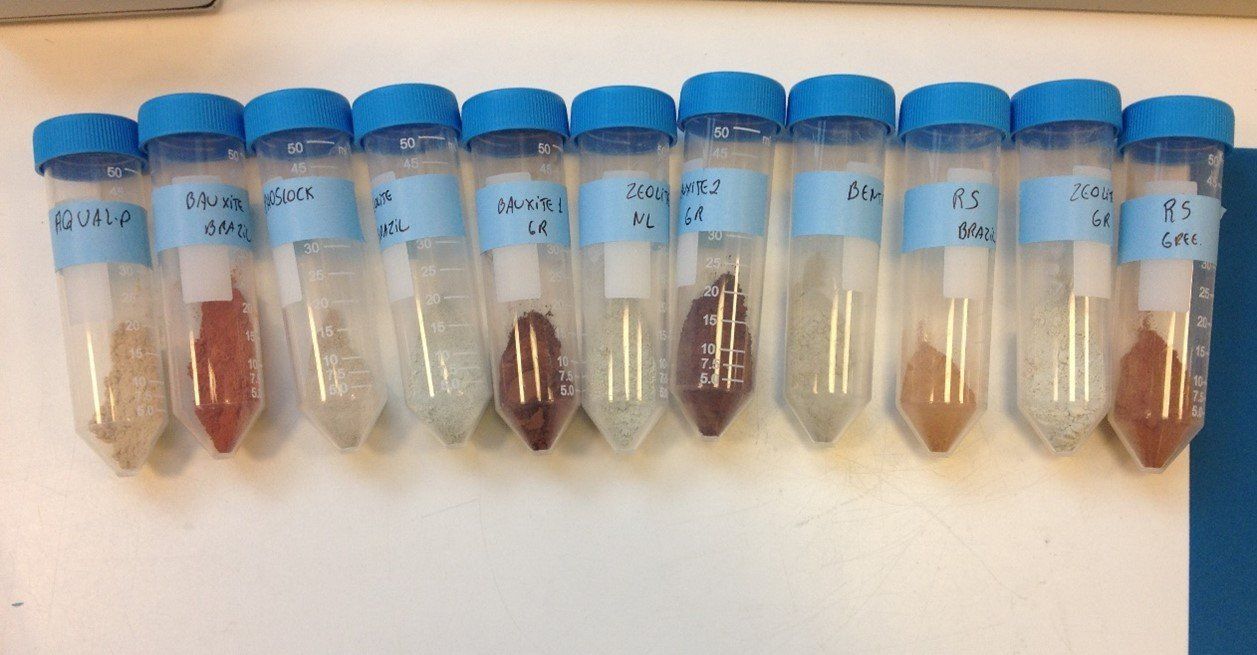
Apart from modified materials, several natural soils and clays can also adsorb P.
Adsorption capacities are often lower than the modified materials, however these materials still have potential as a natural alternative to modified materials in certain situations.
The aim of this project was to test the P adsorption capacities of various natural materials.
Scaled-up testing was undertaken on materials that showed promise to ensure that the materials would be suitable for use on a larger scale.
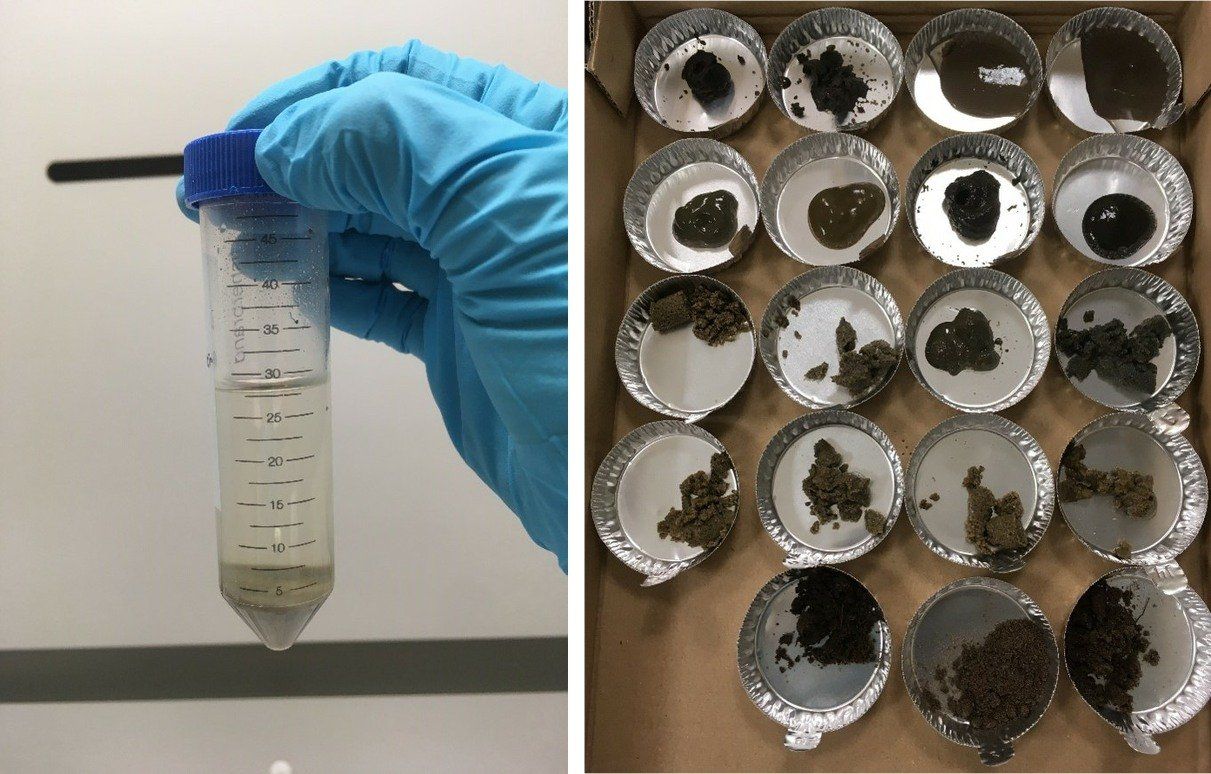
The best method to quantify the mobile P pool in sediments/soils is sequential phosphorus extraction.
LSI researchers have recently been looking for ways to simplify and to shorten the existing protocol.
This research has involved extracting phosphorus from sample materials using a variety of methods. The extraction steps contained in the original protocol have been modified in a number of ways and the results obtained using the modified method compared with results obtained using the original protocol.

It is well known in the scientific literature that only one element (N or P) needS to be reduced in order to manage eutrophication and cyanobacterial blooms.
Efforts have historically been focused on P, as it is cheaper and easier to reduce. Nevertheless, the reduction of nitrogen, specifically ammonia, is also necessary in certain instances in order to avoid the risk of fish kills.
In this project, we have been testing natural zeolites from different locations worldwide on their capacity to adsorb ammonia. We have also modified zeolites to check if this increases efficiency.

Metal-based coagulants have been widely used in water treatment plants and lake restoration projects.
Recently, organic coagulants have gained attention as a possible alternative.
In this project, we tested the coagulation efficiency of organic coagulants and examined their impact on cyanobacterial cells
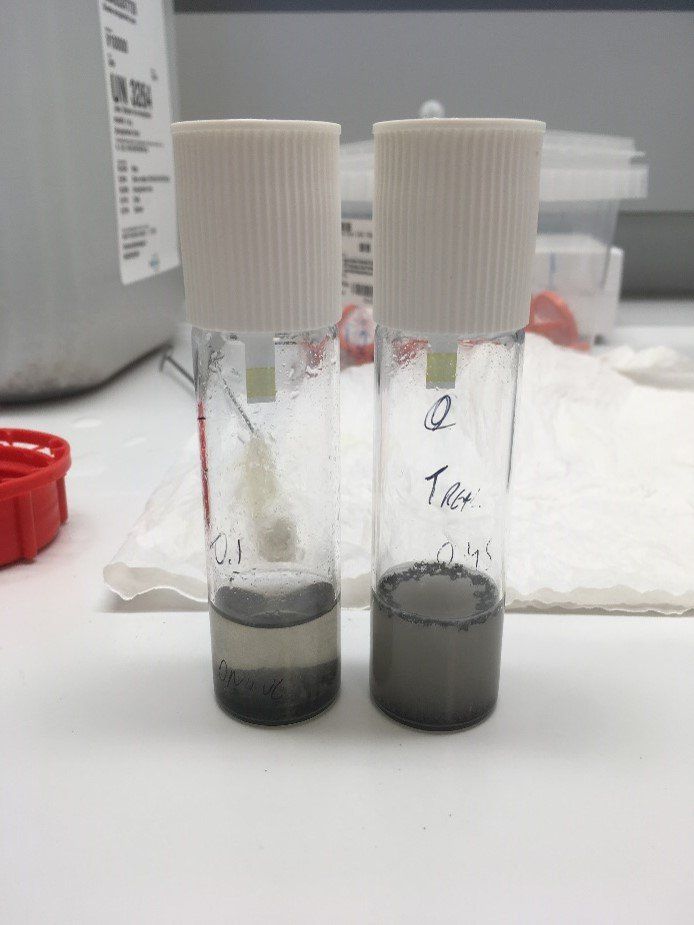
Arsenic contamination, mainly in groundwater, has been a global problem.
In this project, we have been testing experimentally and by chemical equilibrium modelling the capacity of clays to adsorb arsenite and arsenate.
In addition, we also look at the desorption once the As is adsorbed.
- De Magalhães, L., Noyma, N.P., Furtado, L.L., Drummond, E., Balthazar, V., Leite, G., Mucci, M., Oosterhout, F. Van, Lúcia, V., Huszar, D.M., Lürling, M., Marinho, M.M., 2019. Managing Eutrophication in a Tropical Brackish Water Lagoon : Testing Lanthanum-Modified Clay and Coagulant for Internal Load Reduction and Cyanobacteria Bloom Removal. Estuaries and Coasts.
- De Magalhães, L., Noyma, N.P., Furtado, L.L., Mucci, M., van Oosterhout, F., Huszar, V.L.M., Marinho, M.M., Lürling, M., 2016. Efficacy of Coagulants and Ballast Compounds in Removal of Cyanobacteria (Microcystis) from Water of the Tropical Lagoon Jacarepaguá (Rio de Janeiro, Brazil). Estuaries and Coasts 1–13. https://doi.org/10.1007/s12237-016-0125-x
- Habtemariam, H., Kifle, D., Leta, S., Mucci, M., Lürling, M., 2021. Removal of cyanobacteria from a water supply reservoir by sedimentation using flocculants and suspended solids as ballast: Case of Legedadi Reservoir (Ethiopia). PLoS One 16, e0249720. https://doi.org/10.1371/journal.pone.0249720
- Josué, I.I.P., Cardoso, S.J., Miranda, M., Mucci, M., Ger, K.A., Roland, F., Marinho, M.M., 2018. Cyanobacteria dominance drives zooplankton functional dispersion. Hydrobiologia 1–13. https://doi.org/10.1007/s10750-018-3710-0
- Lürling, M., Kang, L., Mucci, M., van Oosterhout, F., Noyma, N.P., Miranda, M., Huszar, V.L.M., Waajen, G., Manzi, M., 2020a. Coagulation and precipitation of cyanobacterial blooms. Ecol. Eng. 158. https://doi.org/10.1016/j.ecoleng.2020.106032
- Lürling, M., Mucci, M., Waajen, G., 2020b. Removal of Positively Buoyant Planktothrix rubescens in Lake Restoration. Toxins (Basel). 12, 700. https://doi.org/10.3390/toxins12110700
- Lürling, M., Noyma, N.P., de Magalhães, L., Miranda, M., Mucci, M., van Oosterhout, F., Huszar, V.L.M., Marinho, M.M., 2017. Critical assessment of chitosan as coagulant to remove cyanobacteria. Harmful Algae 66, 1–12. https://doi.org/10.1016/j.hal.2017.04.011
- Mucci, M., 2017. Mitigating algal blooms and eutrophication - the importance of system analysis and in-lake measures. LakeLine Mag. -Student Corner.
- Mucci, M., Douglas, G., Lürling, M., 2020a. Lanthanum modified bentonite behaviour and efficiency in adsorbing phosphate in saline waters. Chemosphere 249, 126131. https://doi.org/10.1016/j.chemosphere.2020.126131
- Mucci, M., Guedes, I.A., Faassen, E.J., Lürling, M., 2020b. Chitosan as a Coagulant to Remove Cyanobacteria Can Cause Microcystin Release. Toxins 2020, Vol. 12, Page 711 12, 711. https://doi.org/10.3390/toxins12110711
- Mucci, M., Maliaka, V., Noyma, N.P., Marinho, M.M., Lürling, M., 2018. Assessment of possible solid-phase phosphate sorbents to mitigate eutrophication: Influence of pH and anoxia. Sci. Total Environ. 619–620, 1431–1440. https://doi.org/10.1016/j.scitotenv.2017.11.198
- Mucci, M., Noyma, N.P., de Magalhães, L., Miranda, M., van Oosterhout, F., Guedes, I.A., Huszar, V.L.M., Marinho, M.M., Lürling, M., 2017. Chitosan as coagulant on cyanobacteria in lake restoration management may cause rapid cell lysis. Water Res. 118, 121–130. https://doi.org/10.1016/j.watres.2017.04.020
- Noyma, N.P., de Magalhães, L., Furtado, L.L., Mucci, M., van Oosterhout, F., Huszar, V.L.M., Marinho, M.M., Lürling, M., 2016. Controlling cyanobacterial blooms through effective flocculation and sedimentation with combined use of flocculants and phosphorus adsorbing natural soil and modified clay. Water Res. 1–13. https://doi.org/10.1016/j.watres.2015.11.057
- Noyma, N P, De Magalhães, L., Miranda, M., Mucci, M., Van Oosterhout, F., Huszar, V.L.M., Marinho, M.M., Lima, E.R.A., Lurling, M., 2017. Coagulant plus ballast technique provides a rapid mitigation of cyanobacterial nuisance. PLoS One 12. https://doi.org/10.1371/journal.pone.0178976
- Noyma, Natalia P, De Magalhães, L., Miranda, M., Mucci, M., Van Oosterhout, F., Huszar, V.L.M., Marinho, M.M., Lima, E.R.A., Lürling, M., 2017. Coagulant plus ballast technique provides a rapid mitigation of cyanobacterial nuisance. PLoS One 12. https://doi.org/10.1371/journal.pone.0178976
- van Oosterhout, F., Waajen, G., Yasseri, S., Manzi Marinho, M., Pessoa Noyma, N., Mucci, M., Douglas, G., Lürling, M., 2020. Lanthanum in Water, Sediment, Macrophytes and chironomid larvae following application of Lanthanum modified bentonite to lake Rauwbraken (The Netherlands). Sci. Total Environ. 706. https://doi.org/10.1016/j.scitotenv.2019.135188
- Behets G.J., Mubiana K.V., Lamberts L., Finsterle K., Traill N., Blust R., D'Haese P.C., 2020. Use of lanthanum for water treatment A matter of concern? Chemosphere Vol. 239 (2020) 124780. https://doi.org/10.1016/j.chemosphere.2019.124780
- Copetti, D., Finsterle, K., Marziali, L., Stefani, F., Tartari, G., Douglas, G., Reitzel, K., Spears, B., Winfield, I.J., Crosa, G., D'Haese, P., Lürling, M., 2016. Eutrophication management in surface waters using a lanthanum-modified bentonite: a review. Water Res. XXX, 1-13. http://dx.doi.org/10.1016/j.watres.2015.11.056
- Crosa, G., Yasseri, S., Nowak, K.E., Canziani, A., Roella, V., Zaccara, S., 2013. Recovery of Lake Varese: reducing trophic status through internal P load capping. Fundam. Appl. Limnol. 183 (1), 49-61. http://dx.doi.org/10.1127/1863-9135/2013/0427
- D'Haese P.C., Douglas G., Verhulst A, Neven E., Behets G.J., Vervaet B.A., Finsterle K., Lürling M., Spears B., 2019. Human health risk associated with the management of phosphorus in freshwaters using lanthanum and aluminium. Chemosphere 220 (2019), pp. 286-299. https://doi.org/10.1016/j.chemosphere.2018.12.093
- Dithmer, L., Nielsen, U.G., Lürling, M., Spears, B., Yasseri, S., Lundberg, D., Jensen, N.D., Reitzel, K., 2016. Responses in sediment phosphorus concentrations and composition across 10 lakes following applications of lanthanum modified bentonite. Water Res. 97, 101-110. DOI: 10.1016/j.watres.2016.02.011
- Epe T.S., Finsterle K., Yasseri S., 2017. Nine years of phosphorus management with lanthanum modified bentonite (Phoslock®) in a eutrophic, shallow swimming lake in Germany, Lake and Reservoir Management, DOI:10.1080/10402381.2016.1263693 http://dx.doi.org/10.1080/10402381.2016.1263693
- Mackay, E.B., Maberly, S.C., Pan, G., Reitzel, K., Bruere, A., Corker, N., Douglas, G., Egemose, S., Hamilton, D., Hatton-Ellis, T., Huser, B., Li, W., Meis, S., Moss, B., Lürling, M., Phillips, G., Yasseri, S., Spears, B.M., 2014. Geoengineering in lakes: welcome attraction or fatal distraction? Inland Waters 4, 349e356. http://dx.doi.org/10.5268/IW-4.4.769
- Spears, B.M., Mackay, E.B., Yasseri, S., Gunn, I.D.M.,Waters, K.E., Andrews, C., Cole, S., de Ville, M., Kelly, A., Meis, S., Moore, A.L., Nürnberg, G.K., van Oosterhout, F., Pitt, J., Madgwick, G., Woods, H.J., Lürling, M., 2016. A meta-analysis of water quality and aquatic macrophyte responses in 18 lakes treated with lanthanum modified bentonite (phoslock®). Water Res. 97, 111-121. http://dx.doi.org/10.1016/j.scitotenv.2012.09.066
- Spears, B.M., Maberly, S.C., Pan, G, Mackay, E., Bruere. A., Corker. N., Douglas, G., Egemose, S., Hamilton, D., Hatton-Ellis, T., Huser, B., Li,W., Meis, S., Moss, B., Luerling, M., Phillips, G., Yasseri, S., Reitzel, K., 2014. Geoengineering in lakes: a crisis of confidence? Environ Sci Technol 48: 9977–9979.
- Spears, B.M., Lürling, M., Yasseri, S., Castro-Castellon, A.T., Gibbs, M., Meis, S., McDonald, C., McIntosh, J., Sleep, D., Van Oosterhout, F., 2013. Lake responses following lanthanum-modified bentonite clay (Phoslock®) application: an analysis of water column lanthanum data from 16 case study lakes. Water Res. 47 (15), 5930-5942. http://dx.doi.org/10.1016/j.watres.2013.07.016
- Yasseri, S., Epe, T.S., 2016. Analysis of the La:P ratio in lake sediments–vertical and spatial distribution assessed by a multiple-core survey. Water Res 97, 96-100. https://doi.org/10.1016/j.watres.2015.07.037
- North American Lake Management Society - NALMS (2015,2016,2017,2018, 2019)
- Congress of the International Society of Limnology - SIL (2016, 2018)
- Symposium for European Freshwater Science- SEFS (2016)
- Lathi Lakes - Restoration of Eutrophic Lakes: Current Practices and Future Challenges (2018)
- Congress of the Brazilian Society of Limnology (2019)
- Lathi Lakes (2021)
OUR PARTNERS
Limnological Solutions International Pty Ltd
REGISTERED ADDRESS
(Limnological Solutions International Pty Ltd)
Level 6, 57 The Esplanade, Cotton Tree,
QLD 4558, Australia
REGISTERED ADDRESS
(LSI Europe B.V.)
Lodelaan 5A, 3527 KA, Utrecht, Netherlands
Privacy & Cookie Policy
Admin login
Designed & hosted with ![]() by Moose Digital Media Ltd
by Moose Digital Media Ltd




